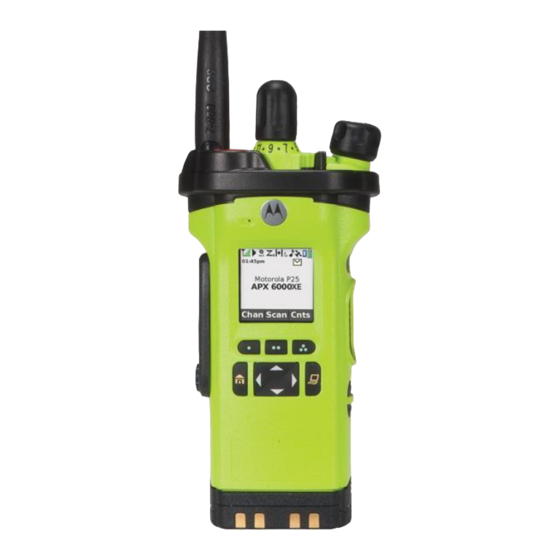
Motorola APX 6000XE 2.5 Manuals
Manuals and User Guides for Motorola APX 6000XE 2.5. We have 2 Motorola APX 6000XE 2.5 manuals available for free PDF download: User Manual, Manual
Motorola APX 6000XE 2.5 User Manual (142 pages)
APX TWO-WAY RADIOS
Brand: Motorola
|
Category: Two-Way Radio
|
Size: 1.27 MB
Table of Contents
Advertisement
Motorola APX 6000XE 2.5 Manual (83 pages)
RADIO AND SYSTEM ORIENTATION, Butler Regional Interoperable Communications System
Brand: Motorola
|
Category: Two-Way Radio
|
Size: 3.62 MB

